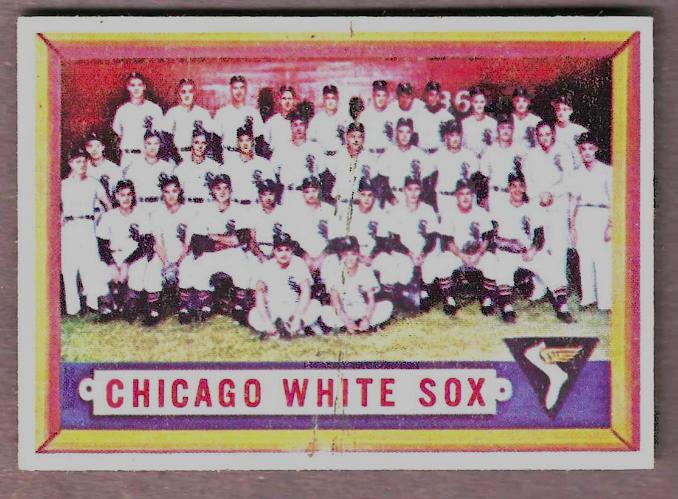Below are short bits & pieces on sportscard & baseball trading card collecting.
Please wander around the website for more info, prices, values & images
on vintage baseball, football, basketball, hockey, sport and non-sports cards.

1934,1935,1936 Diamond Matchbooks
During much of the Great Depression, matchbook collecting swept the country !
Sports matchbooks started appearing in the 1930s, most issued by Diamond Match Company
of New York. Over the next few years, several series were issued with
similar designs; b/w photo of the player on front with short write-up
and stats on back. The player's name and team was also printed on the 'saddle'.
Please consider the following info as approximate.
1934's first baseball release featured 200 players, in 4 different background
colors (red,blue,green and orange) for a total of 800 different covers.
The set features plenty of Hall-of-Fame greats like Dizzy Dean and Mel Ott.
1935's issue was tiny with only 24 total covers (8 red,8 blue,8 green).
A third series was later released with 200 or more different covers (players/colors).
1930's matchbook covers appear to be huge bargains for collectors as their current values
are fractions of the value of Goudey and other baseball cards from the same era.
Click for complete
1935-1936 Diamond Matchbook Checklist and Prices
Note: You may be on that page right now.
|

Autographed Gateway Cachets
Gateway Stamp Company has provided collectors well over 1 MILLION
authenticated certified autographs over the last 30 years.
Silk Cachets from Gateway Stamp Company
Even though a "stamp company", Gateway rarely dealt in stamps, going down
a new and creative road becoming one of the world's most unique secrets in
autograph collecting combining the best in art, color photographs, history
and autographs with their full-color silk cachet envelopes. Gateway's first
client was Cardinals Hall of Famer Lou Brock with hundreds to follow.
WHAT ARE FULL-COLOR SILK CACHETS?
A "cachet" is a message or design on an envelope marking a postal event.
"Full-color silk" refers to the delicate material into which the
original art and photography are printed. After which each silk is applied
to the envelope, signed by the player and then officially post-marked by the
U.S. Post Office IN THE CITY OF THE EVENT !!!
WHY POSTMARKS?
The key to EVERY Gateway cachet is the postmark.The best way to mark a date
in history is with a postmark. The rules governing the granting of
postmarks GUARANTEE that NO Gateway issue can EVER be re-issued protecting
the value of the autographed, postmarked cachets !!!
|

1954 Bowman Baseball
Cards Checklist & Values
Competition was raging between Topps and Bowman in 1953 and 1954 leading to
problems with both companies sets. Bowman caused Topps to missing 6 cards
in 1953 with Topps getting revenge by signing Ted Williams to an exclusive
contract in 1954. Bowman then had to pull Ted Williams card #66 from their
set shortly after they started printing, replacing it with Jimmy Piersall,
who also was on card #210 making the 1954 Bowman Ted Williams #6
one of 50's scarcest cards.
 Perhaps distracted by it's competition with Topps, the 1954 Bowman set was
filled with errors and variations. Nearly 20% (40/224 cards) had some sort
of variation, with some having more than 2.
Perhaps distracted by it's competition with Topps, the 1954 Bowman set was
filled with errors and variations. Nearly 20% (40/224 cards) had some sort
of variation, with some having more than 2.
The St. Louis Browns recent move to Baltimore also made things interesting.
Bowman's artists had no idea what an Orioles jersey would look like -
so they just madeone up.
 TOP ROOKIES: Don Larsen, Harvey Kuenn, Frank Thomas
TOP ROOKIES: Don Larsen, Harvey Kuenn, Frank Thomas
TOP STARS: Mickey Mantle, Willie Mays, Yogi Berra, Duke Snider,
Roy Campanella, Whitey Ford, Phil Rizzuto ...
Ted Williams is not considered part of a complete set.
Click for complete
1954 Bowman Baseball card checklist, values and prices.
Note: You may be on that page right now.
|

Protecting and Storing your Card Collection
There are many different ways to protect, organize and store your sports cards.
Soft Sleeves
also called "penny sleeves" are the most basic protection for your cards.
Made of thin plastic, they come in packs of 100 and are very inexpensive.
Top Loads
are rigid plastic holders and a step up in protection over "soft sleeves".
Called top-loads because you place the card thru a thin opening at the top.
They come in many sizes for regular cards upto 8-1/2 x 11 for magazines and
even larger.
Screw-Down Acrylic Holders
These are sometimes used for better, more expensive cards. Small screws hold
two pieces of clear acrylic together. In a variety of sizes and thickness
that not only protect the card but can funciton as a paper weight or display
item.
There are also Single-Screw Screw-Downs that use only 1 screw to seal the holder.
They are easier to use and provide the same type of protectionas regular screwdowns
and they are also much less expensive costing as little as .30 in quantity
while 1 inch or 2 inch acrylic screw-downs can cost upto several dollars.
© 1995-2019 "InterNet's Baseball Card Store" / Joseph Juhasz ... All Rights Reserved
|








